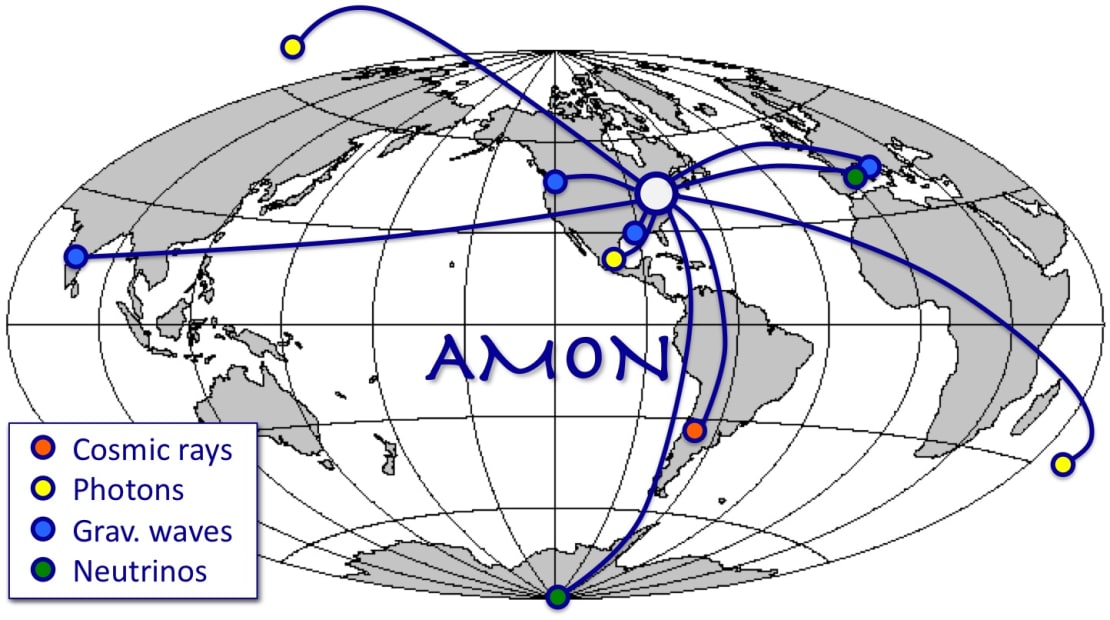IceCube researchers are once more joining the longstanding biennial Neutrino conference. The 27th International Conference on Neutrino Physics and Astrophysics, Neutrino 2016, started on Monday in London, England, and runs through Saturday, July 9.
Marek Kowalski, Humboldt-University Berlin/DESY, was the first IceCube speaker, who gave a plenary talk, Neutrino astronomy with IceCube and beyond, on Monday, July 4. Kowalski presented the growing astrophysical neutrino signal detected with IceCube and updated the collaboration plans for a next-generation IceCube detector. New data along with an independent analysis using throughgoing muons have confirmed the discovery of astrophysical neutrinos initially featured in the November 2013 issue of Science.

Anna Franckowiak, DESY, and Jason Koskinen, Niels Bohr Institute of the University of Copenhagen, gave two additional talks on Monday. Franckowiak presented Multimessenger astronomy with neutrinos, including a discussion of how combining neutrino data with electromagnetic measurements will increase the sensitivity to identify neutrino sources, which could help solve unanswered astrophysics questions. The Astrophysical Multimessenger Observatory Network, AMON, is a new real-time channel used to distribute alerts from a network of telescopes.
Koskinen summarized recent atmospheric neutrino and oscillations results from IceCube and the infill array DeepCore, which included the search for sterile neutrinos in IceCube in Atmospheric Results from IceCube/DeepCore. The talk also presented the possibility of determining the neutrino mass order with the proposed IceCube low-energy extension PINGU.

Sessions about IceCube research held for high school students were led by former IceCube graduate student Matthias Danninger, now a postdoc at the University of British Columbia. Students found out about neutrinos and how IceCube uses them to explore the universe from the South Pole detector. Danninger shared his experience working at the South Pole and his journey aboard the Oden icebreaker to calibrate surface sensors for IceCube.
IceCube Collaboration posters at Neutrino 2016 include:
High-Energy Neutrino follow-up of first gravitational wave event GW 150914,
Véronique Van Elewyck, APC/Université Paris Diderot, France, on behalf of ANTARES, IceCube, and LIGO/Virgo collaborations
The joint search for gravitational wave and low energy neutrino signals from core-collapse supernovae: Methodology and status report,
Maxim Gromov, SINP-MSU, Russia, on behalf of LIGO/VIRGO, IceCube, LVD, Borexino, and KamLAND-Zen collaborations
Enhanced Starting Track Event Selection for Diffuse Neutrinos in IceCube,
Kyle Jero, University of Wisconsin—Madison
An all-sky search for muon neutrinos coincident with observed gamma ray bursts in IceCube,
Ryan Maunu, University of Maryland
Constraining neutrino oscillation parameters with IceCube/DeepCore,
Philipp Eller, Penn State University
Atmospheric muon and electron neutrino energy spectrum measured by first year of IceCube-86 detector,
Takao Kuwabara, Chiba University
Search for sterile neutrinos with IceCube DeepCore,
Andrii Terliuk, DESY
Non-standard neutrino interactions in IceCube,
Albrecht Karle, University of Wisconsin—Madison
Atmospheric tau neutrino appearance measurement with IceCube DeepCore,
Michael Larson, Niels Bohr Institute
Results from the search for eV-sterile neutrinos with IceCube,
Carlos Argüelles Delgado, MIT